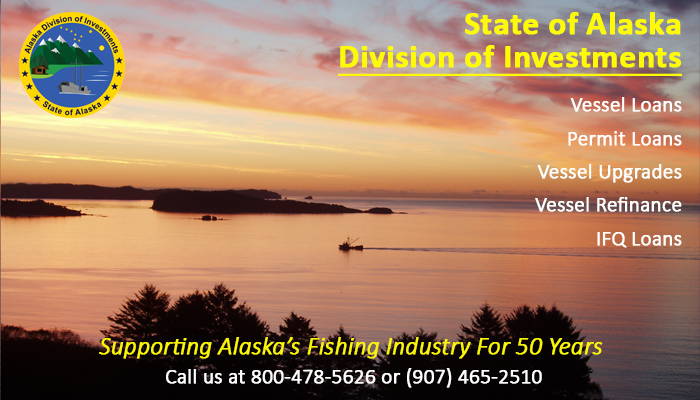The Fish Ticket
December 5, 2024
Permits & State Fisheries
Bristol Bay drift permits popped back up over $140,000 this week, for the first time since just before the 2023 season. We're seeing interest in Kodiak Tanner permits, with an under 60' permit leased at $4,000.
There's been interest in PWS drift permits, but many are waiting to see what happens at next week's PWS Board of Fisheries meeting, December 10-16. As a reminder, the written comment period has ended, but there will be opportunity to comment in person or virtually. Here are some of the hot-button items (yes, this is copied from last week, it's my last chance to plead for your participation at this meeting!):
- There are a handful of proposals (#14-#17) aimed at curbing or closing the PWS pollock trawl fishery. Proponents of the proposals would like to see no bottom contact, no king salmon bycatch, and full observer coverage. Opponents (including ADFG) say they have the tools they need to manage the fishery sustainably. More info here.
- Proposal 78 would cut PWS hatchery pink salmon production by 25%. Proponents say that such high levels of pink salmon enhancement could be harming other species, like Chinook. Opponents (including ADFG) say there are scientific measures in place to sustainably protect wild salmon populations, and that a reduction would have dire economic consequences. More info here.
- There are a few proposals that would allow permit stacking in the PWS drift fishery (#56-#57) and allow seine fishermen to own and fish two permits (#73-#74). Currently, no stacking is allowed in the drift fishery, and last cycle, the Board voted to permit two individual seine permit holders to fish concurrently on one boat and set additional gear, but did not go so far as to allow one permit holder to fish two permits.
- Proposal #5, proposed by ADFG, would allow ADFG to close areas to commercial fishing with specific gear types by emergency order. The department says they need this authority in order to protect rockfish from longline gear. However, the proposal as written includes all groundfish types.
ADFG published the 2024 Lower Cook Inlet Commercial Salmon Fishery Season Summary, showing a dismal harvest of 321,000 fish, nearly half of which were hatchery cost-recovery.
CFEC is asking for responses to a technology modernization survey. If you have ideas for improvements or comments on what's working well (or not), let 'em know.
IFQs & Federal Fisheries
The IFQ market is starting its annual "grind to a halt" as we approach the end of the year, when RAM stops processing transfers until permits are issued again in the spring. If you have cash, there's still [a very small amount of] time to squeeze in that last transfer on 2024 taxes. On that note, we have an offer of $19.00 for 3ACB.
The IFQ halibut and sablefish season ends at 11:59pm on Saturday, December 7th. The statewide halibut TAC is 81% harvested, with 2C at 87%, 3A at 91%, 3B at 88%, 4A at 55%, 4B at 31%, and 4C/D at 43%. The statewide sablefish TAC is 59% landed, with AI at 4%, BS at 33%, CG at 78%, SE at 83%, WG at 69% and WY at 84%. [more]
The IPHC held its Interim Meeting last week. ICYMI: find presentations and documents online here, watch recordings of the presentations on Youtube, or read the recap by Undercurrent News.
The NPFMC is currently meeting in Anchorage through December 10. The Council will set TACs for BSAI and GOA groundfish (likely tomorrow) and Norton Sound Red King Crab, will set charter halibut management measures for the 2025 season, review the Amendment 80 Program Review Report and the IFQ Program Review Report, and more.
Of interest to sablefish stakeholders: in their report to the Council today, the AP recommended holding the overall BSAI sablefish TAC at the same level as 2024, but reapportioning 1,000 mt from AI to BS. (The hook-and-line fleet landed less than half of their BS TAC this year; the trawlers landed over 90% of theirs.) If you have thoughts on this, sign up for public testimony at Friday's Council meeting here.
Here's a rundown of the 2024 pollock season and a look at what 2025 might bring. The AP recommended today a 5.8% increase in the 2025 BSAI pollock quota.
The 2024 Yellowfin sole harvest is the lowest level since 2000 and is 25% below last year and 45% below 2022. Poor weather conditions and the implementation of abundance based management of halibut bycatch are thought to be contributing factors.
What Else?
Remember the record low ice levels in the Bering Sea back in 2018 and the havoc it wreaked? A new NOAA study suggests we should prepare for it to happen again... and again and again through the end of the 2030s.
The U.S. House of Reps passed The FISHES Act yesterday, which aims to streamline the regulatory process behind fishery disaster relief and get funds out the door quicker.
The Dept. of Commerce and NMFS is allocating $99 million for state and tribal projects designed for conservation and restoration of Alaska and West Coast salmon.
ASMI held its annual All Hands on Deck meeting this week. Here are some key takeaways (spoiler alert: things might be looking up), here's a full recap, here's what Alaska's soon-to-be Representative Nick Begich had to say, and here's an interesting pitch for developing a canned pollock product for international and domestic food aid programs.
Domestic prices for Pacific cod are on the rise - up 11% since August, but still substantially less than Norwegian and Russian cod, which are at record high levels.
A new study on Chinook abundance as it relates to the population of Southern Resident Killer Whales suggests that lack of prey - at least in the Salish Sea - might not be the problem (or the entire problem).
As a result of a class action lawsuit brought by employees who alleged delayed payments during Covid-19 quarantines, OBI Seafoods and Ocean Beauty Seafoods will pay damages to the tune of $2.1 million to the 2,300 class members.
This week's Alaska Fisheries Report: "Excerpts from conversations in Kodiak about climate change adaptation."






